Account Login
Motorola Moto G8 Plus
Motorola Moto G8 Plus Overview
Motorola Moto G8 Plus Price in Nepal, Deals & Specifications
The phone was launched on 2019, October 24, with a price of around About 270 EUR in Nepal. It runs on Android 9.0 (Pie), featuring a 6.3 inches touchscreen display, and has 64GB 4GB RAM. Phone is powered by a Li-Po 4000 mAh, non-removable battery, the device ensures ...
Display and Design
The phone sports a 6.3 inches, 99.1 cm2 (~82.5% screen-to-body ratio) touchscreen display with a resolution of 1080 x 2280 pixels, 19:9 ratio (~400 ppi density). With a IPS LCD screen, this device offers a smooth visual experience, available in color variants like Dark Blue, Dark Red.
Performance, Storage, and Battery
The phone runs Android 9.0 (Pie), upgradable to Android 10 and powered by a Qualcomm SDM665 Snapdragon 665 (11 nm), Octa-core (4x2.0 GHz Kryo 260 Gold & 4x1.8 GHz Kryo 260 Silver). Equipped with 64GB 4GB RAM and internal storage, the phone weighs 188 g (6.63 oz) and measures 158.4 x 75.8 x 9.1 mm (6.24 x 2.98 x 0.36 in). It also houses a robust Li-Po 4000 mAh, non-removable battery for extensive usage.
Camera
The rear camera setup includes a 48 MP, f/1.7, 26mm (wide), 1/2.0", 0.8µm, PDAF 16 MP, f/2.2, 14mm (ultrawide), dedicated video camera (1080p) 5 MP, f/2.2, (depth) and It supports 4K@30fps, 1080p@30/60/120fps, 1080p@30fps (gyro-EIS) video recording. For selfies, the device includes a 25 MP, f/2.0, 0.9µm front camera, also supporting 1080p@30/120fps video recording.
Motorola Moto G8 Plus Connectivity and Sensors
The Motorola Moto G8 Plus offers connectivity options like Wi-Fi, GPS, Bluetooth 5.0, A2DP, LE, aptX, USB with USB Type-C 2.0, OTG, and HSPA 42.2/5.76 Mbps, LTE (2CA) Cat13 600/100 Mbps. It supports Single SIM (Nano-SIM) or Hybrid Dual SIM (Nano-SIM, dual stand-by) and includes sensors like Fingerprint (rear-mounted), accelerometer, gyro, proximity, compass.
More from Motorola
Motorola Moto G8 Plus Full Specifications
| Announced | 2019, October 24 |
| Status | Available. Released 2019, October 28 |
| Colors | Dark Blue, Dark Red |
| Price | About 270 EUR |
| Models | XT2019, XT2019-2 |
| Technology | GSM / HSPA / LTE |
| 2G | GSM 850 / 900 / 1800 / 1900 - SIM 1 & SIM 2 (dual-SIM model only) |
| 3G | HSDPA 850 / 900 / 1700(AWS) / 1900 / 2100 |
| 4G | 1, 2, 3, 4, 5, 7, 8, 18, 19, 20, 26, 28, 38, 40, 41 |
| Speed | HSPA 42.2/5.76 Mbps, LTE (2CA) Cat13 600/100 Mbps |
| Dimensions | 158.4 x 75.8 x 9.1 mm (6.24 x 2.98 x 0.36 in) |
| Weight | 188 g (6.63 oz) |
| Build | Glass front, plastic back, plastic frame |
| SIM | Single SIM (Nano-SIM) or Hybrid Dual SIM (Nano-SIM, dual stand-by) |
| Type | IPS LCD |
| Size | 6.3 inches, 99.1 cm2 (~82.5% screen-to-body ratio) |
| Resolution | 1080 x 2280 pixels, 19:9 ratio (~400 ppi density) |
| OS | Android 9.0 (Pie), upgradable to Android 10 |
| Chipset | Qualcomm SDM665 Snapdragon 665 (11 nm) |
| CPU | Octa-core (4x2.0 GHz Kryo 260 Gold & 4x1.8 GHz Kryo 260 Silver) |
| GPU | Adreno 610 |
| Card Slot | microSDXC (uses shared SIM slot) |
| Variants | 64GB 4GB RAM |
| Primary | 48 MP, f/1.7, 26mm (wide), 1/2.0", 0.8µm, PDAF 16 MP, f/2.2, 14mm (ultrawide), dedicated video camera (1080p) 5 MP, f/2.2, (depth) |
| Features | HDR |
| Primary Video | 4K@30fps, 1080p@30/60/120fps, 1080p@30fps (gyro-EIS) |
| Secondary | 25 MP, f/2.0, 0.9µm |
| Secondary Video | 1080p@30/120fps |
| Loudspeaker | Yes, with stereo speakers |
| 3.5mm Jack | Yes |
| WIFI | Wi-Fi 802.11 a/b/g/n/ac, dual-band, Wi-Fi Direct |
| Bluetooth | 5.0, A2DP, LE, aptX |
| Navigation | GPS, GLONASS, BDS, GALILEO |
| NFC | Yes (market dependent) |
| USB | USB Type-C 2.0, OTG |
| Radio | FM radio |
| Sensors | Fingerprint (rear-mounted), accelerometer, gyro, proximity, compass |
| Type | Li-Po 4000 mAh, non-removable |
| Charging | 15W wired |
Reviews
There are no reviews yet.








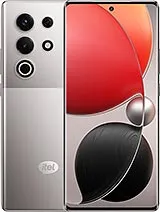


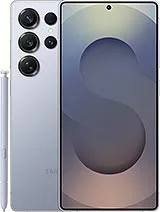


-pro-price-in-nepal.webp)
-price-in-nepal.webp)





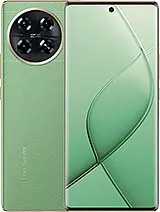


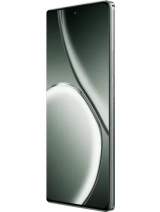



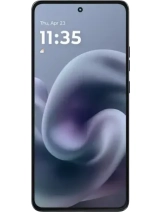 Motorola Moto X70 Air
Motorola Moto X70 Air
 Motorola Moto Pad 60 Neo
Motorola Moto Pad 60 Neo
 Motorola Moto G06
Motorola Moto G06
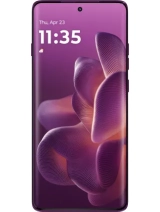 Motorola Edge 70 5G
Motorola Edge 70 5G
 Motorola Moto G36 5G
Motorola Moto G36 5G
-price-in-nepal.webp) Motorola Moto G Play (2026)
Motorola Moto G Play (2026)